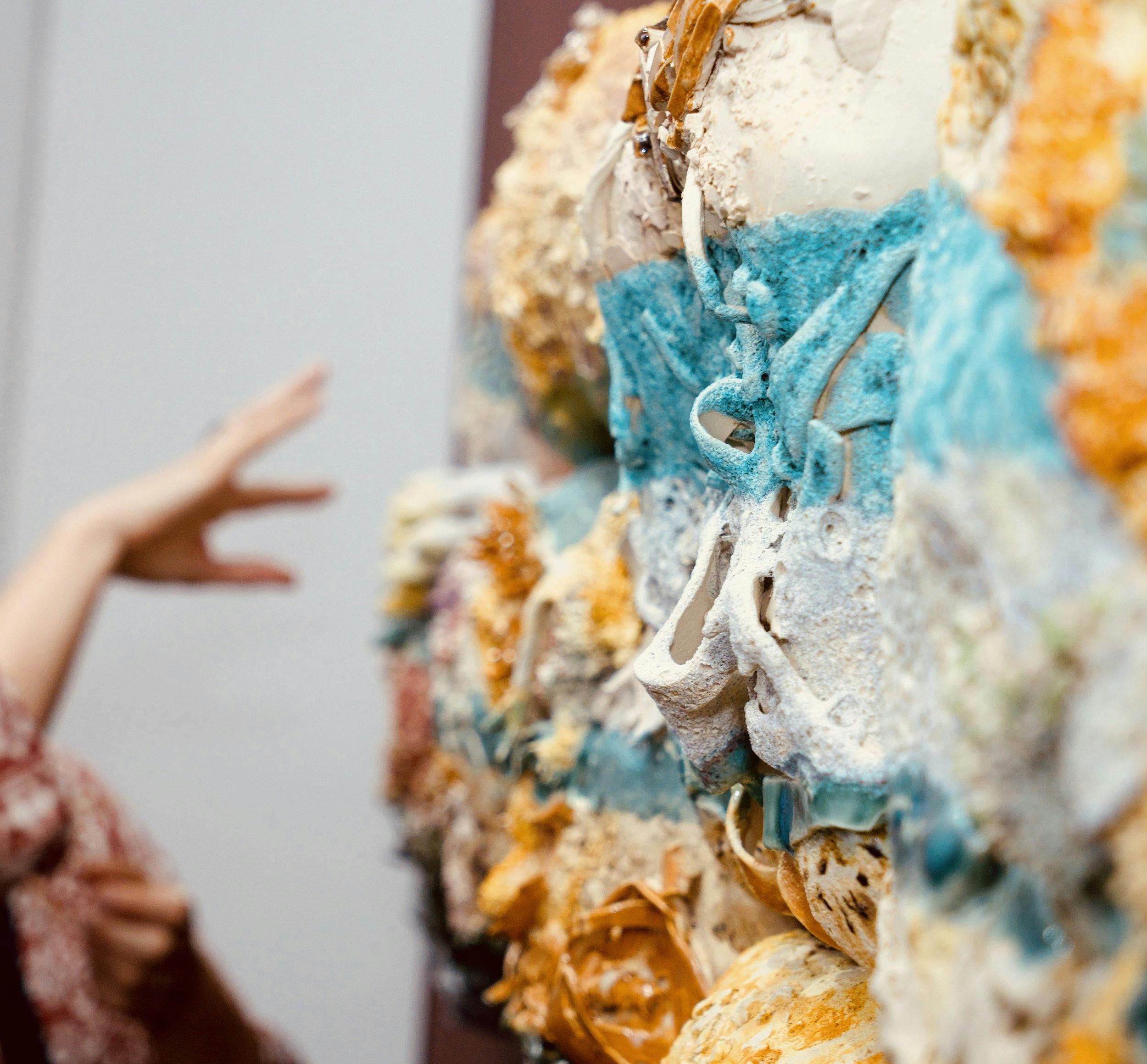
In Conversation with Julia Ellen Lancaster
Describe the role materials play in your work, specifically regarding their locality and place-making.
You might start with an inanimate object, or a fragment of an object, whether it’s manmade or naturally occurring, but it already has a history you can’t ignore. Jane Bennett in her book ‘Vibrant Matter: A Political Ecology of Things’, explores the concept of vital materiality and argues that matter is not passive but actively participates in the world’s processes, and that this has profound implications for how we understand agency and political ecology.
In the interplay between human action and material agency, locality emerges not as a backdrop, but as a co-creator. The materials that constitute a place, it’s soil, water, flora – are vibrant participants, shaping the unique characteristics of the local as much as any cultural or social influence. Placemaking is an act of collaboration, where materials are not merely passive objects but active contributors. All guiding human experience and memory, making a place more than just a physical space, but a living breathing entity.
In a less complex way, it’s perhaps about a willingness to connect with what’s in front of you and meeting people and building relationships through the materials I’m using.
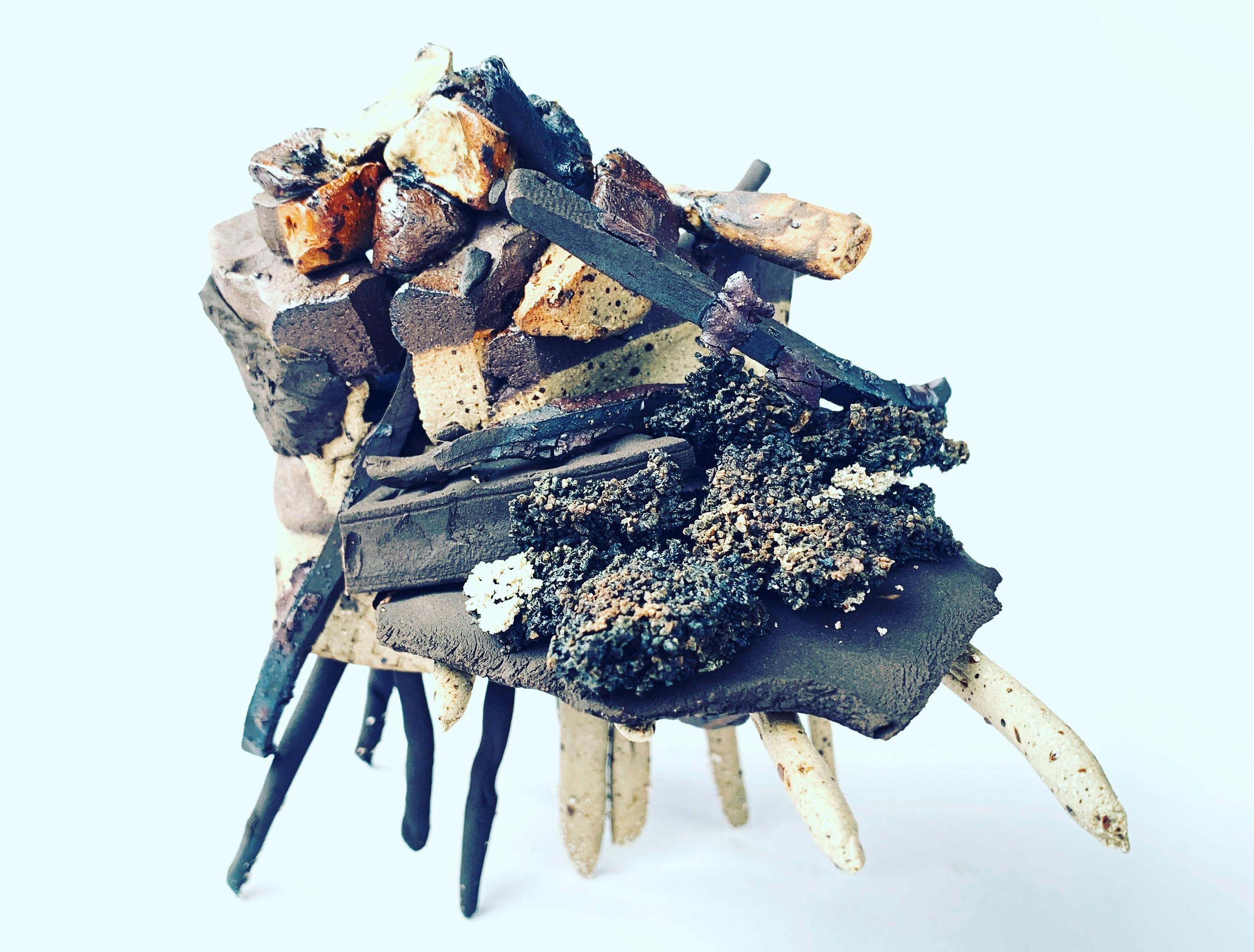
How does working with materials rich in context and labor impact the outcome of your practice? How does the process of collecting and processing them affect your work?
The world-renowned Dutch garden designer, Piet Oudolf, famous for his incredible garden designs that have the appearance of atmospheric paintings, said ‘it’s the journey in life to find out what real beauty is and notice it is everywhere’.
I love this notion and want to embrace that way of thinking when I’m making work. You have to look very closely at my pieces, they are not a quick win and can develop over a long period of time. In this way, they sub-consciously take on the life that has preceded them, extending further that richness of context. I have hyposensitivity, which means a need to touch everything. It’s got me into trouble sometimes but working with clay means I am in my element and prefer using my hands as opposed to tools when it’s safe to do so. The fact that I use lengthy processes to prepare the materials in the first place means a forced slowing down of thought processes, and an intimacy with the materials which I don’t think I would get if I was making quick work.
Is it essential to work with local materials rather than purchased ones? Or is it the synergy of foraged and acquired materials that lies at the heart of your exploration?
I haven’t reached a point that makes sense to me just yet, where I only work with foraged or reclaimed materials. There is nothing I enjoy more than receiving abandoned/unwanted materials and setting about working out what they are through a process of testing. But that doesn’t quite match the volume at which I want to sometimes make work, when I have a vision of a piece I want to pursue. I make work quite slowly, but nearly always have more than two or three projects on the go at the same time, inching forward on each one.

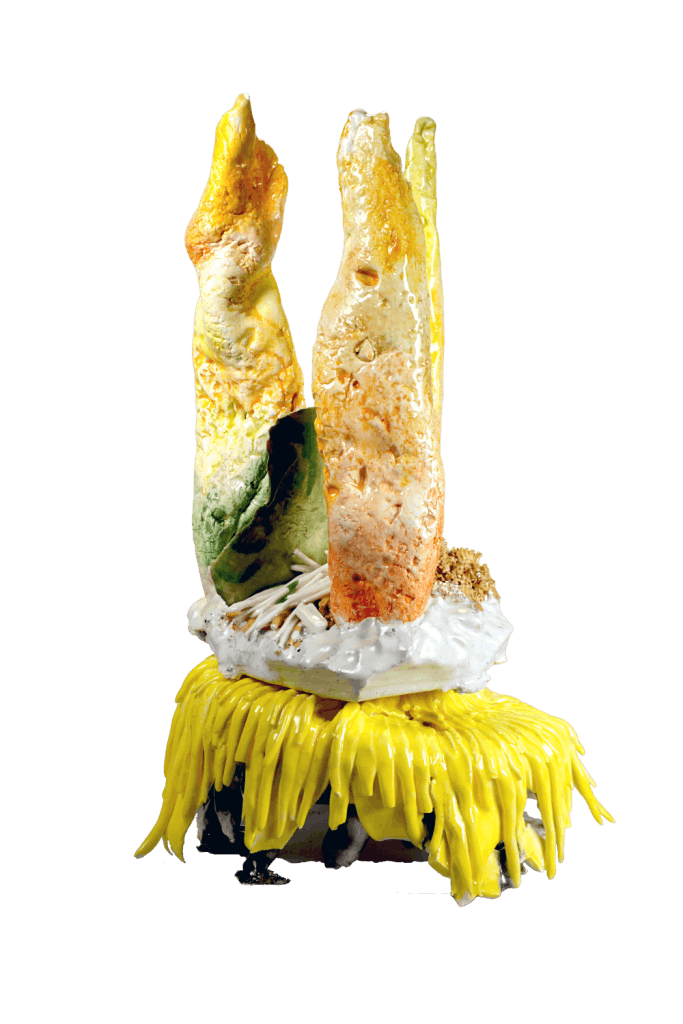
Your practice seems to thrive on artist-in-residence projects. Would you say this format of place-specific explorations impacts the nature of your sculptures?
In the big scheme of things, I’ve only undertaken a few residencies, but when I have, they have each been pivotal, important and highly productive. I think it’s true to some extent to say your aliveness begins where your comfort zone ends. So, although I love the peace and solitude of my studio at home, I do find that throwing myself into a new environment or situation where nothing is the same and your brain really goes into overdrive, is sometimes necessary. It can kick your ass a little and be a way of taking a step back from what you’ve been doing or what your familiar with to really ask the difficult questions of yourself as an artist.
Nearly all the residencies I’ve undertaken have come about as a result of developing a relationship with the host over a long period of time beforehand. There must be a genuine and meaningful reason for me to undertake that kind of immersive, sometimes exhausting, enquiry. It’s confusing to me how the term Residency has been adopted by so many to mean just about anything, from a week-long retreat to a one-off show. I think it’s confusing, but you have to make your own decisions about whether it’s something that’s going to help your practice or is just about PR.
There’s always been a reason why I’ve wanted to spend time in a particular place, whether it’s to do with the materials I think I’ll find there, the influences of the surrounding landscapes or the connections between the landscape and the humans that occupy the same space. So, the place specific residencies I’ve undertaken do impact the nature of my work. Most recently, the three-month residency in Melbourne, Australia, was an opportunity to work with new clays, new techniques with expert advice, develop my thinking further around re-cycling and incorporating new materials into my practice and encountering new audiences on a global level, who were unfamiliar with my work.
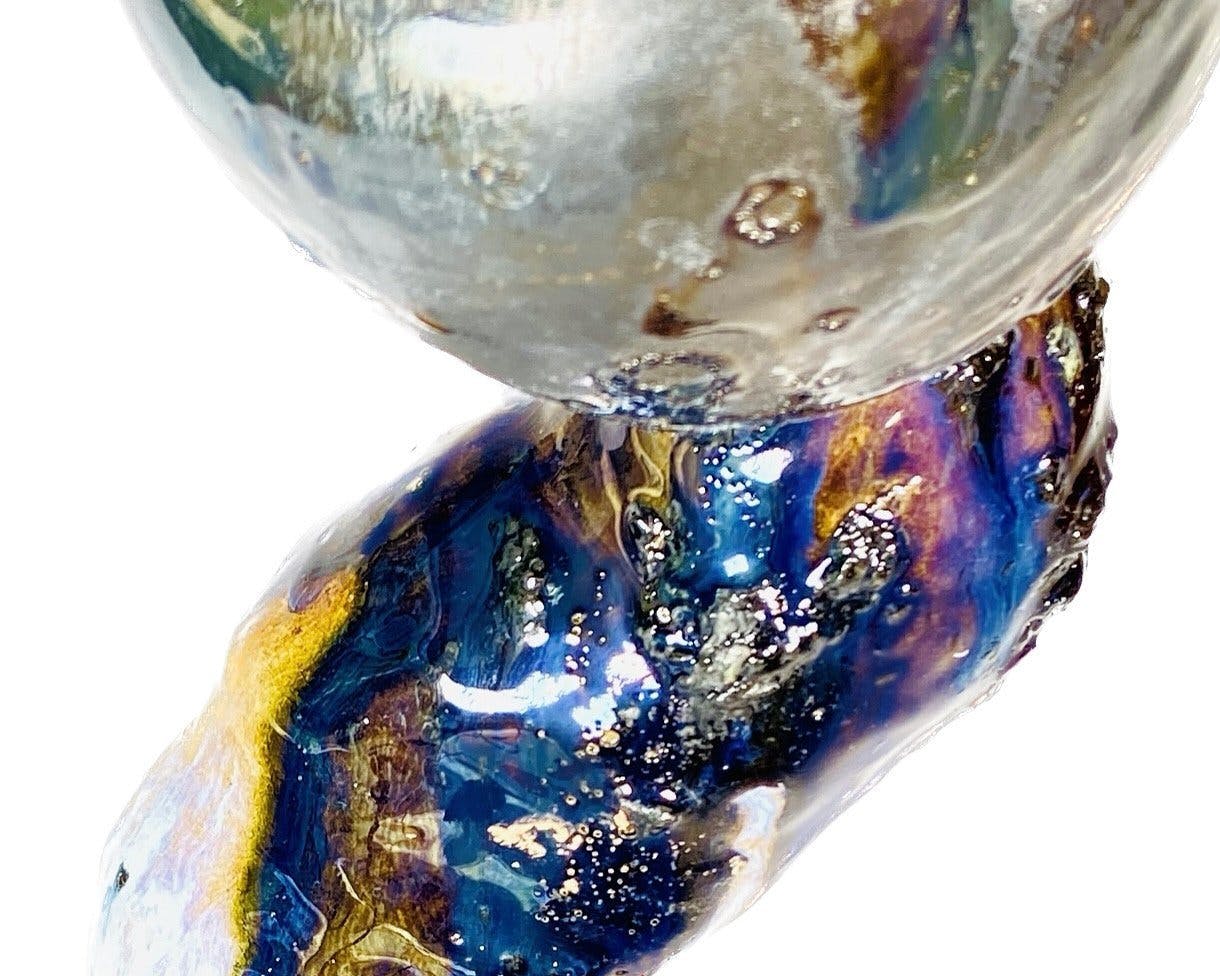
What process do you follow when creating? Does the material dictate the outcome, or does it coexist with an idea?
The process of making decides the subject. But it is always led by a need to address problems that are troubling me in a wider sense.
We live in such a polarized world, but it can be unhelpful to get aggressive and defensive. Through the process of making, I can channel that anger and sadness about injustice, to get out the other side without acting in a reactive or aggressive way. I suppose what I’m saying is materials and their locality can make me think abstractly about the people that occupy that same space.
I don’t tend to make work for an exhibition with a detailed plan in mind but instead allow things to evolve through a process of making, unmaking and remaking. This has been described by some as a process of growth, decay and renewal. Using and re-using materials, fragments and waste has become part of the DNA of my practice.
Is there a particular project that was pivotal in your practice? What led you to focus on material-based work?
Some years ago, when I was struggling with a lot of other things in my life there was this feeling that the only thing that was going to see me through those times was making work. Phylidda Barlow once said “struggle is such a necessary experience. It’s just you and the work. In a way, that gives you absolute freedom’’. It just made sense to me; it was the only thing I felt free about. I had to be using materials I could afford or acquire cheaply. So not only did I learn how to source and process clay, but I also asked artists who I knew who were working with clay to bear me in mind anytime they were having a clear out. Increasingly I’ve become the person that recycles the waste of other ceramic artists, and in that sense I’m very much recycling from within the community.
Time spent in Tokyo, learning to make with very little and spending time looking more closely at notions of mending, from ceramics to textiles, had a major impact on my practice. In Japan, concepts of care, attention and detail are seemingly much more prevalent and inform not only a practice but a way of life.
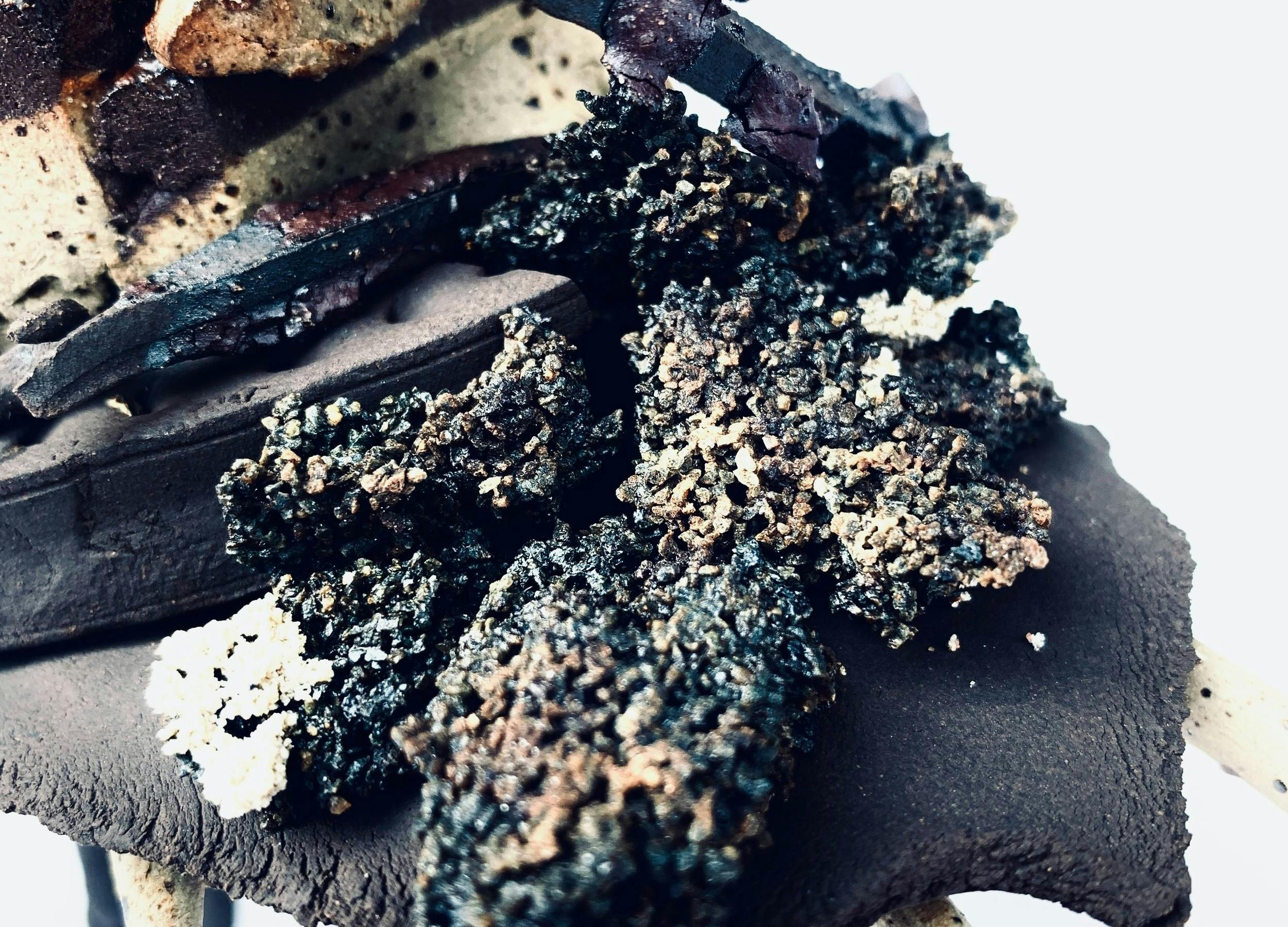
Your work during the residencies at Leach Pottery and Anchor Studio, Newlyn, as a Leach100 artist, stands out. What role did the locality of these projects in Cornwall play in the development of your work?
I have a long-standing relationship with the southwest coast having worked with Porthmeor Studios in St Ives in a number of ways over the years, supporting the development of their own studio and residency programme.
The coastline of Cornwall is phenomenal, and you can’t help but be drawn by its beauty, but it also has a long history of artists working there, lured by the light and the wildness. The notion of ‘plein air’ painting, with its roots in 19th-century French impressionism, was adopted by the painters and founders of the Newlyn School. Literally, they were working outdoors to capture the immediacy of the landscape, its vigor, depth, and continuous change. The Anchor Studio, now an exceptional work/live artist’s studio, brought back to life after years of ruin, by the Borlase Smart John Wells Trust, was once home to the Newlyn School. I spent time there as one of the first ‘Artists in Residence’, following its restoration. The same kind of thinking, that immediacy, that nature driven enquiry of ‘plein air’ embracing of the natural environment, was the driving force behind the work I made there. Every day I was walking in the landscape, collecting samples or rocks and clay, and at the same time I found myself connecting with the community. It led to many conversations about clay.
Cornwall is known as ‘Clay Country’ and during an open exhibition I held at The Anchor, numerous visitors brought me samples of clay, dug from their own back gardens with stories to tell. It compounded my relationship with clay as a medium with a narrative. It blurs the boundaries between human and non-human, organic and synthetic. The work I make embodies a vision of resistance and transformation.
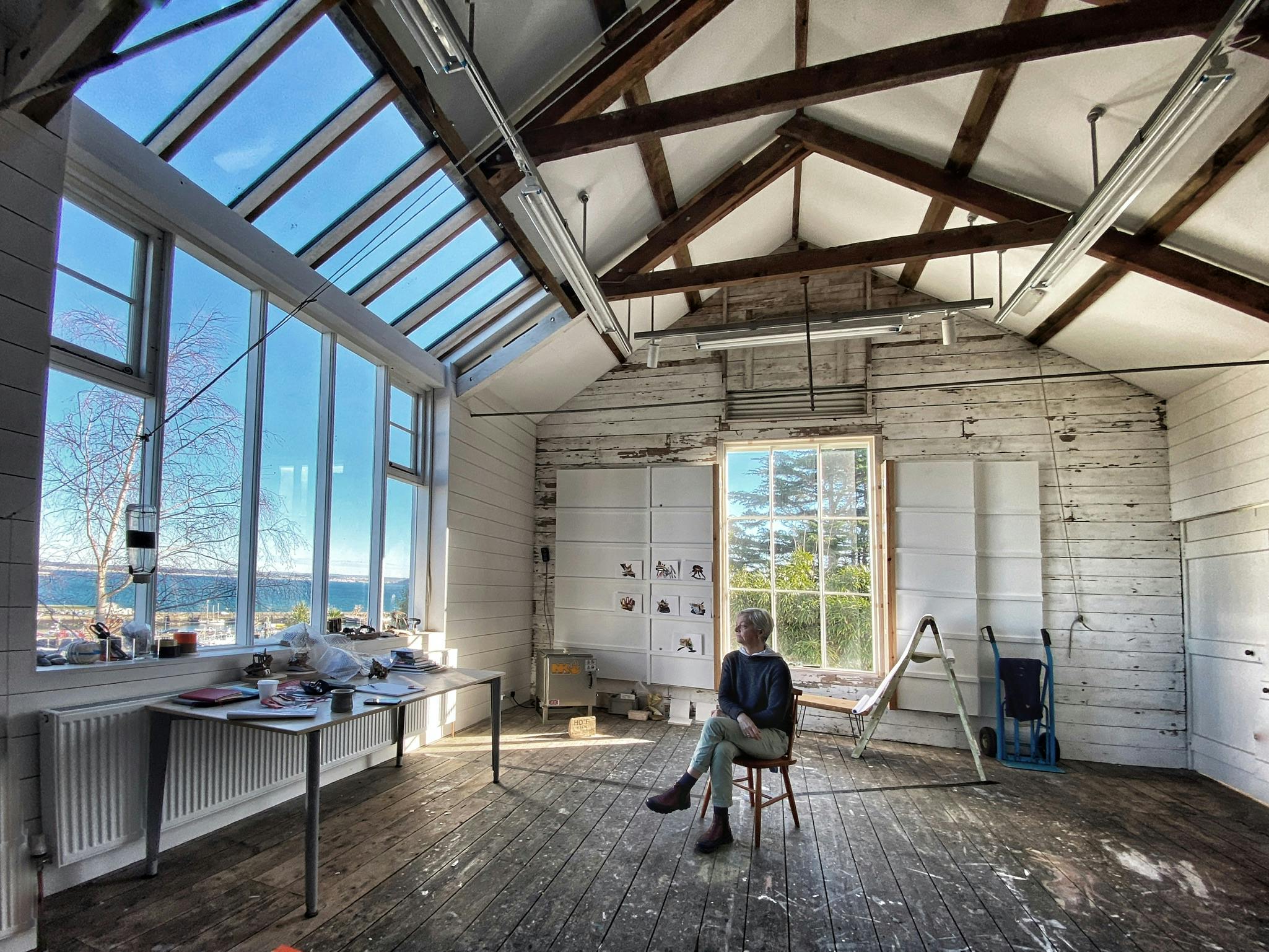
Locally sourced materials and waste materials are central to your practice. Has this approach developed organically? The Japanese concept of 'mottainai' – the avoidance of waste – has been mentioned in connection with your work. Please describe its significance.
I spent time in Tokyo and this concept became familiar to me as not only a way of making but also a way of living. In Japan, the word mottainai (pronounced moat-tie-nigh) is used to express a feeling of regret when something is discarded, or its value wasted. This ancient Japanese philosophy embraces the idea of respecting resources and their value whilst also reducing waste. It’s something that stuck with me ever since. I think it probably resounded with my own upbringing where if we wanted anything we had to make it ourselves.
In my studio, I throw very little away, instead keeping every tiny bit of unused material, knowing that I will find a use for it somewhere down the line in my work.
What methods do you follow when collecting and testing materials? Please share any practical tips or steps you take when testing clays and glazes.
I don’t consider myself to be an expert in this and working with this medium has required a willingness to fail. Although I have in the past undertaken short courses, overall, they didn’t feel wholly relevant to me or to what I was interested in. Most of the artists working with clay that were highlighted were male and I didn’t identify with their practice. Of course, I’ve since discovered the enormous range of artists that exist working with clay, both past and present, from all nationalities and genders. There are some great courses out there that will take you through every step. Although, I would like to see a greater commitment of financial support to access those courses, for those less able to afford them.
When I’m testing, I nearly always start by making sure the material is completely dried out and broken down, then I’m adding water, to see how it reacts. That’s always the first step. You can deduce a lot from how something reacts with water followed by heat. There is a great deal of information available out there now about testing and there are obvious things like using stoneware trays to test clays in the kiln, testing glazes at low and high temperatures, always wearing protective safety goggles and breathing masks. But I’d also add, don’t be afraid to seek the advice of others, most likely there is someone out there who has done it or who has some idea around what you’re testing. Expect to be surprised, nothing ever turns out how you expect.
https://www.juliaellenlancaster.com/
@juliaellenlancaster_ceramics